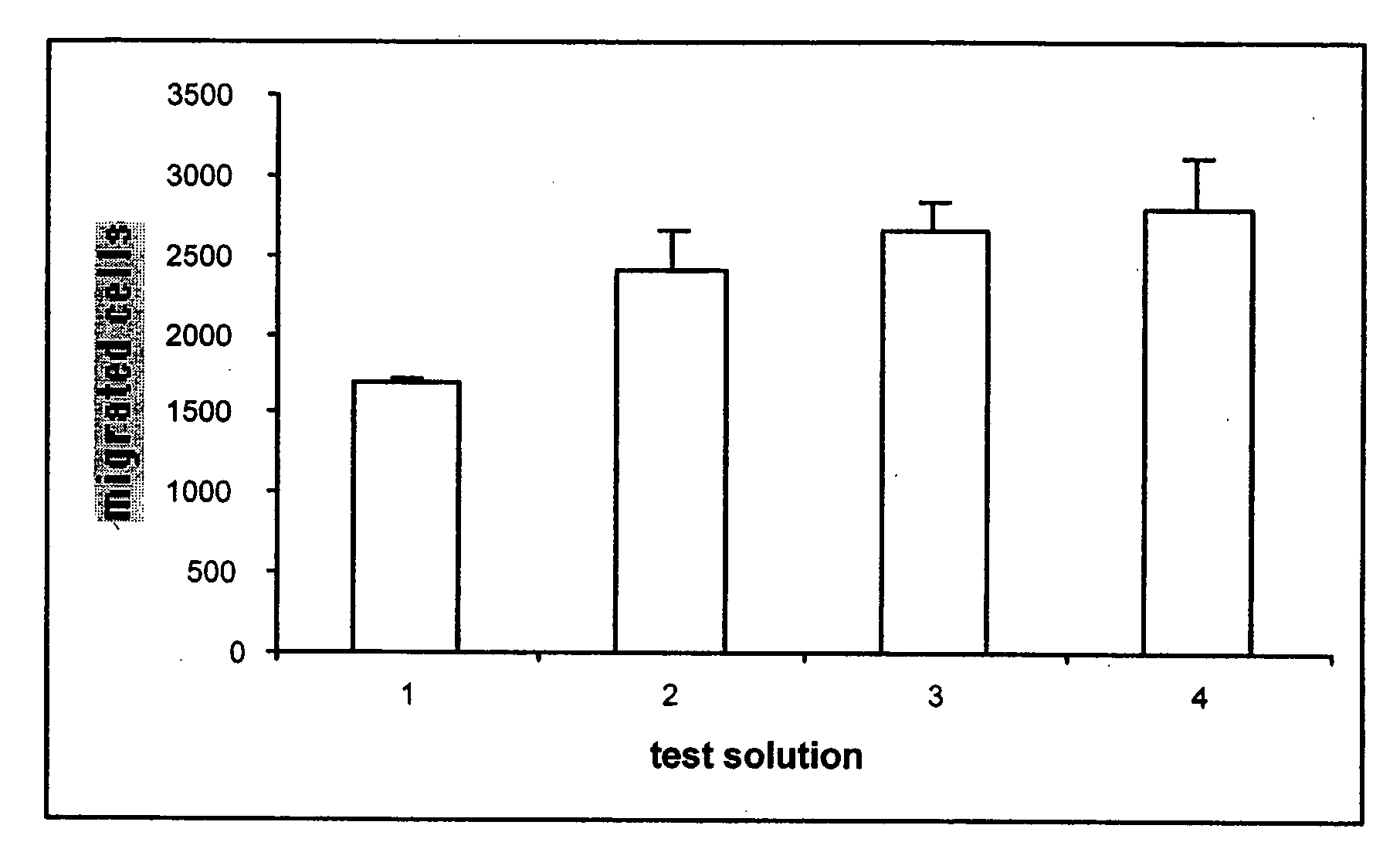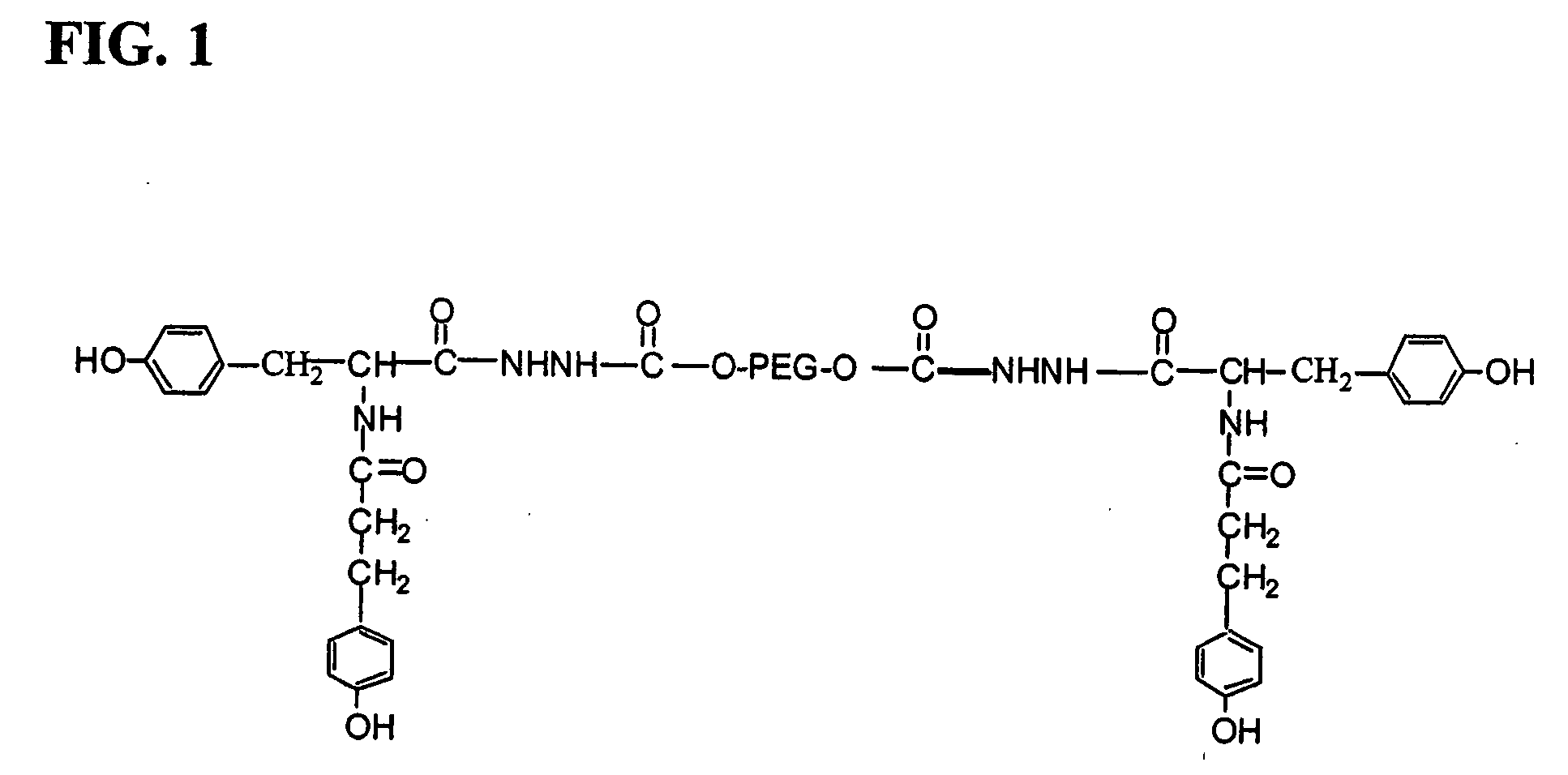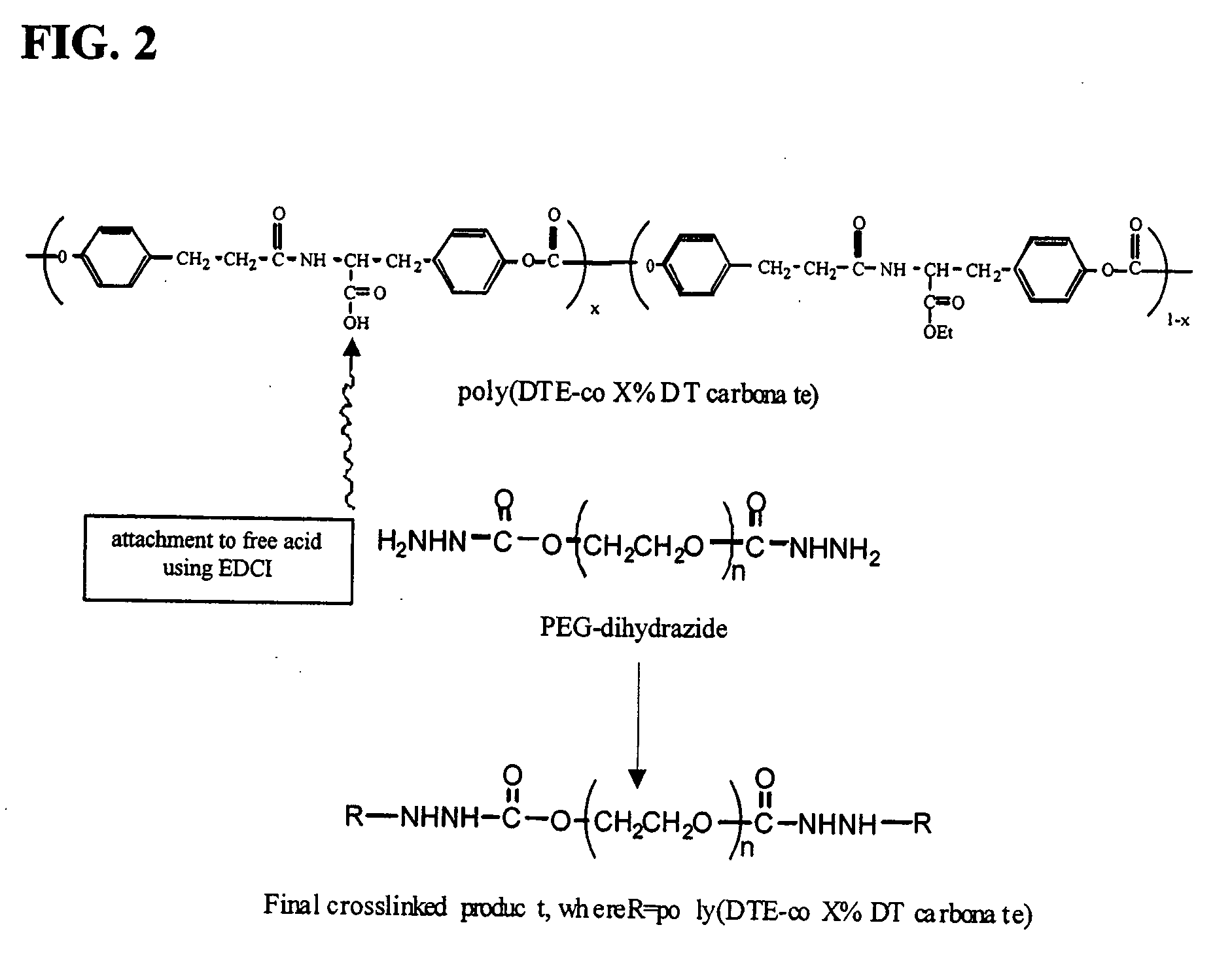Hydrazide compounds with angiogenic activity
- Summary
- Abstract
- Description
- Claims
- Application Information
AI Technical Summary
Benefits of technology
Problems solved by technology
Method used
Image
Examples
example 1
Preparation of PEG-Dihydrazide
[0051] PEG (Mw=2000, 100 g, 0.05 mol) and toluene (1 L) were dried by azeotropic distillation of a toluene solution using a Dean-Stark adapter. After cooling, a 20% solution of phosgene in toluene (150 mL) was added to the flask and stirred overnight to obtain PEG-dichloroformate. Excess phosgene was distilled off along with toluene. Then, methylene chloride (100 mL) and dry toluene (300 mL) were added to the residue followed by N-hydroxysuccinimide (NHS) (17 g, 0.15 mol) and triethylamine (TEA) (15 g, 0.15 mol), and stirred at 0° C. After 2 h, hydrazine (15.7 mL, 0.50 mol) was added and the reaction mixture was stirred for an additional 12 h. The white precipitate of TEA.HCl was removed by filtration, the filtrate was concentrated to a volume of 200 mL and then PEG-dihydrazide was precipitated with 600 mL of diethyl ether. The desired product was isolated by suction filtration, recrystallized from isopropanol (IPA) (800 mL) and then dried under vacuu...
example 2
Crosslinking Reaction of PEG-Dihydrazide and Poly(DTE-co-X % DT Carbonates)
[0052] The crosslinked materials were prepared by reacting a variety of poly (DTE-co-X % DT carbonate)s with PEG-dihydrazide to form porous scaffolds or non-porous films. To prepare a film, the polymer (2 g) was dissolved in 1-methyl-pyrrolidinone (NMP) (20 mL) and PEG-dihydrazide was added in various amounts as shown in Table I:
TABLE IAmounts of PEG-dihydrazide (peg-diH) and EDCI required to fabricate different hydrogelsPEG-diH (mg)EDCI (mg)PEG-diH (mg)EDCI (mg)% DT content% crosslinks(Sponge)(Sponge)(Film)(Film)1086712446801512101186701202016135249001622558415282512520168301130203502017231114020710020179321200215100807161294770862
[0053] Corresponding amounts of N-ethyl,N′-dimethylaminopropyl carbodiimide.HCl (EDCI) were pre-dissolved in methylene chloride (0.5 mL) and added to the reaction mixture, and the reaction mixture was vigorously stirred for 2 minutes. The resulting viscous solution was poured i...
example 3
Preparation of PEG-di-DT Hydrazide
[0054] DT (1.5 g, 4.50 mmol), the PEG-dihydrazide of Example 1 (5 g, 2.36 mmol), NMP (10 mL) and HOBt (0.06 g, 0.45 mmol) were placed in a 250 mL round-bottom flask, and formation of a white paste was observed immediately. Methylene chloride (50 mL) was added and the reaction mixture was stirred in an ice-water bath. After 1 h, EDCI (0.9 g, 4.72 mmol) was added and stirring was continued. At regular intervals, aliquots of the reaction mixture were withdrawn and analyzed by HPLC for the completion of the reaction. After that, the reaction mixture was sequentially washed with 25 mL of water, 5% sodium bicarbonate, 0.2 M hydrochloric acid, and 20% sodium chloride. The organic phase was then dried over magnesium sulfate, filtered, and evaporated. The resulting oil was dissolved in IPA (50 mL) under heat, and then the product was crystallized at −20° C. The PEG-di-DT hydrazide yellow solid was washed with IPA and dried under vacuum at 40° C. The result...
PUM
| Property | Measurement | Unit |
|---|---|---|
| Solubility (mass) | aaaaa | aaaaa |
| Molecular weight | aaaaa | aaaaa |
| Biodegradability | aaaaa | aaaaa |
Abstract
Description
Claims
Application Information
 Login to View More
Login to View More - R&D
- Intellectual Property
- Life Sciences
- Materials
- Tech Scout
- Unparalleled Data Quality
- Higher Quality Content
- 60% Fewer Hallucinations
Browse by: Latest US Patents, China's latest patents, Technical Efficacy Thesaurus, Application Domain, Technology Topic, Popular Technical Reports.
© 2025 PatSnap. All rights reserved.Legal|Privacy policy|Modern Slavery Act Transparency Statement|Sitemap|About US| Contact US: help@patsnap.com



